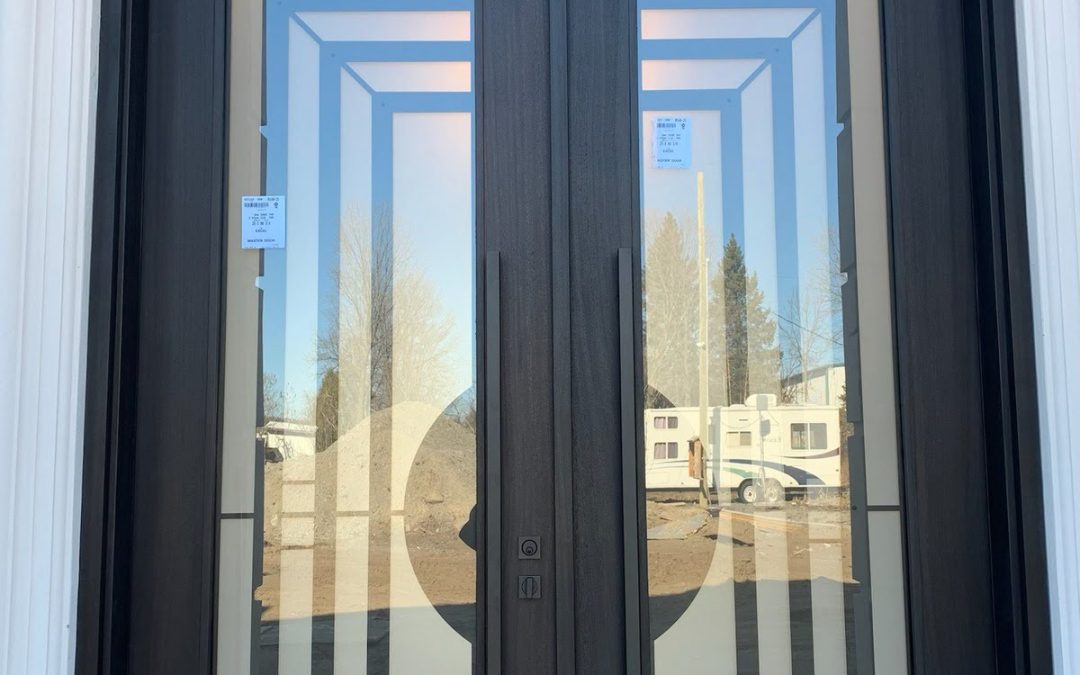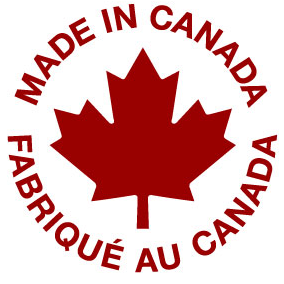French doors have long been a staple in residential design, evoking sophistication with their very name. But what sets them apart from modern swinging doors?
Our team at Master Doors has compiled a full guide to exterior French doors in Canada, allowing you to make the best decision when selecting the product that best suits your needs.
What are French Doors?
In the 17th century, French architects, drawing inspiration from Italian styles, began incorporating expansive casement windows, positioned side by side and extending to the floor. These innovative French windows were made to enhance indoor illumination and facilitate convenient entry to balconies and verandas. Gradually gaining popularity in England, they eventually made their mark in the United States, and rebranded as French doors.
Modern French doors, similar to their historic counterparts, typically consist of two glass panels. Visually, they are distinguished by their broader and sturdier top and bottom rails. Additionally, it’s common for French doors to feature a divided lite pattern, reminiscent of the original French windows adorned with smaller panes of glass separated by muntin bars. During that era, muntin bars served a practical function due to the limited availability of large glass panes.
It’s no wonder that French doors bring a sense of traditional charm. Installing them remains a practical means to illuminate interior spaces with natural light while offering convenient access to outdoor areas such as decks and patios. Interior French doors are also available and can serve as striking architectural features when used to connect expansive indoor spaces.
Inswing vs. Outswing: Which is the Better Choice?
Historically, French windows were side-hinged, swinging inward due to the prevalence of compact balconies. Today, both inswing and outswing doors adorn homes across North America, each with its own set of advantages. So, when it comes to selecting between an inswing and outswing French door, here’s a breakdown of distinctive features to aid your decision-making:
Pros of an Outswing French Door
- Requires less indoor space.
- Offers superior resistance against forced entry.
- Outswing impact French doors provide heightened protection against hurricanes, potentially aligning with hurricane-related building codes.
Pros of an Inswing French Door
- Requires less outdoor space, making it ideal for smaller decks or patios.
- Less prone to being blown shut by the wind when left open.
- Unaffected by heavy snowfall, ensuring continued functionality.
- Allows leaving the door open without exposing it to sudden rainfall, particularly crucial for doors with a painted or stained wood interior finish.
- Offers a wider array of user-friendly and aesthetically pleasing screen choices.
- More prevalent and potentially more budget-friendly than outswing options.
Are Sliding French Doors an Alternative?
Absolutely. Initially, all French doors swung open. However, in contemporary times, the defining factor of a French door lies not only in its swinging mechanism but also in the configuration of its panels. Even if they slide, a pair of door panels with broader top and bottom rails, especially when incorporated with a window grid, can still be classified as French doors. The primary advantage of sliding French doors is their space-saving nature. You can arrange furniture on either side of the door, indoors or outdoors, without impeding its operation. Moreover, due to having fewer hardware components (such as hinges), sliding French doors tend to be more economical than their swinging counterparts.
Are Wood French Doors an Option?
There’s a timeless appeal to natural wood, unmatched in its warmth and beauty. Typically, the interior wood of French doors is shielded by exterior cladding made of extruded aluminum. While all-wood French doors exist, they are primarily encountered in historical restoration jobs.
What Glass Options Are Offered for French Doors?
There are a wide range of options available for glass. At Master Doors, we extend the same range of options for French doors to our options for glass. Patterned glass is a sought-after option for French doors and is made with designs imprinted into the glass to create a seamless textured pattern. This glass offers varying levels of privacy, ranging from total privacy to semi-private or obscure, and is available in different thicknesses to suit your preferred style. In addition, some patterned glass options can be tempered for enhanced durability and safety. Incorporating glass into your French door lets you make it uniquely yours.
Do French Doors Offer Variations in Size, Shape, and Functionality?
While French doors generally share common features, there’s ample room for design flexibility to suit your unique preferences. For an intriguing aesthetic, consider opting for an arch-top French door. Enhancing the design with sidelites on one or both sides or incorporating a transom window above, can dramatically increase natural light and enhance the feeling of spaciousness within interior spaces.
In terms of functionality, you have several choices. French doors can be made with one panel operating while the other remains fixed. In such cases, the operating panel can even be hinged to the stationary panel at the center of the opening. French doors are also available in a wide range of shapes and sizes. You can opt for asymmetrical panel sizes or make a bold statement with a large-sized French door. The options are endless!
Get in Touch with Us for a Quote on Exterior French Doors in Canada
As reputable manufacturers of exterior French doors in Canada, we guarantee quality work from start to finish. Our team at Master Doors works with you every step of the way to ensure a seamless process.
Contact us today and ask about our wide range of custom exterior French doors!



